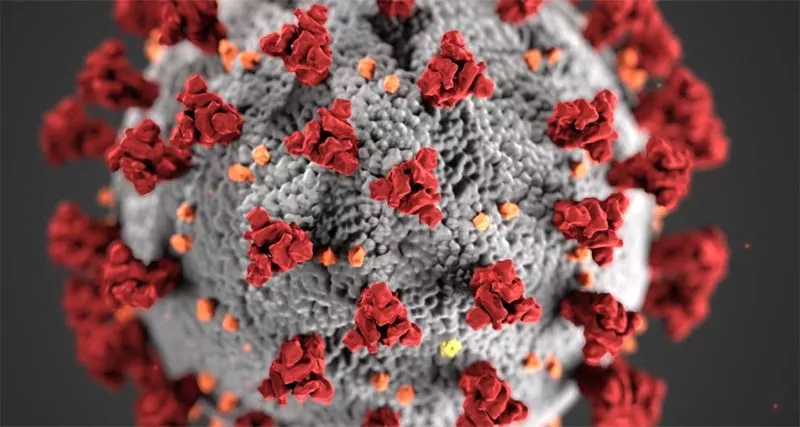Why food isn’t the problem with the coronavirus

igorov syannykov - pixabay.com.
By now, you’ve probably heard that the main way to avoid the coronavirus is to minimize contact with people, not food. Here are 3 reasons why that’s good advice.
So far, we don’t have evidence to suggest that the coronavirus that causes COVID-19 is transmitted through food or causes severe illness by infecting the gut. As for surfaces like food packaging, the virus seems to die off quickly. And even if you’ve touched a package or another surface that might be contaminated, washing your hands with soap or using hand sanitizer should do the trick. Here’s what we know.
1. People are getting sick from contact with other people, not food.

“The first thing is focusing on what we know about how people are getting sick,” says Benjamin Chapman, a professor and food safety extension specialist at NC State University who helps food companies, supermarkets, and restaurants minimize the risk of foodborne illness caused by germs like Salmonella and E. coli.
And when it comes to risk factors for COVID-19, “at the top of that list is being around or close to someone who has symptoms, is asymptomatic, or is pre-symptomatic.”
How do we know that people have gotten sick from close contact?
“That’s based on a whole bunch of data on clusters of illnesses,” says Chapman, citing reports from Wuhan, China, the Diamond Princess cruise ship, and U.S. nursing homes.
“In all of those clusters, we’re not seeing either consuming or handling food being a risk factor at all,” says Chapman. “If it was something to be concerned about, we would expect to see what a normal foodborne illness outbreak looks like.” He’s talking about outbreaks that get traced back to eating a single food, like contaminated romaine lettuce or ground beef.
2. This virus causes severe illness by infecting the respiratory tract, not the gut.

“The second part of this comes down to the biology of the virus itself,” says Chapman.
The coronavirus that causes COVID-19 is an “enveloped” virus, meaning that a coat surrounds its genetic material. Given what we know so far, that coat “won’t survive the high acid environment of our stomachs,” Chapman says.
So even if an infected shopper coughed on an apple before you bought (and ate) it—or if a restaurant worker sneezed near your meal before packing it up for takeout—your stomach acid should knock out any coronavirus before it gets a chance to infect your gut cells.
“Unlike foodborne gastrointestinal (GI) viruses like norovirus and hepatitis A that often make people ill through contaminated food, SARS-CoV-2, which causes COVID-19, is a virus that causes respiratory illness. Foodborne exposure to this virus is not known to be a route of transmission,” says the Food and Drug Administration’s website.
Another reason: cooking. Enough heat should inactivate the coronavirus.
3. The virus doesn’t last for long on surfaces…and washing or sanitizing your hands is the best defense.

In one study, some virus survived for up to 3 days on stainless steel or plastic, 1 day on cardboard, and 4 hours on copper. But the amount of infectious virus dropped off quickly.
Only 1/1,000 of the initial virus load was left by day 2 on stainless steel and by day 3 on plastic. Half was gone after 6 to 7 hours on those two surfaces.
How much virus is enough to make you sick?
It's not clear. But less virus means less risk.
“More importantly, the virus itself is not going to move from my cereal box to my nose, my eyes, or my respiratory system without my hands,” says Chapman. “And I can manage that with handwashing.”
The risk may be low, but it's a good idea to wash or sanitize your hands after grocery shopping and unpacking food deliveries and before preparing or eating food. That helps keep any remaining virus from reaching your eyes, nose, or mouth—and it helps protect you against other germs like Salmonella or the flu. (Check out our guide to grocery shopping during the pandemic for more shopping, handwashing, and sanitizing tips.)
That’s consistent with the message from national health authorities like the Centers for Disease Control and Prevention and the FDA.
“It may be possible that a person can get COVID-19 by touching a surface or object, like a packaging container, that has the virus on it and then touching their own mouth, nose, or possibly their eyes, but this is not thought to be the main way the virus spreads,” says the CDC’s website. “In general, because of poor survivability of these coronaviruses on surfaces, there is likely very low risk of spread from food products or packaging.”
Topics

OUR HEALTHLETTER
Subscribe to Nutrition Action
Nutrition Action is completely independent. We accept no advertising and take no donations from corporations or the government. So we’re free to blow the whistle on dishonest products and to applaud the good ones.

